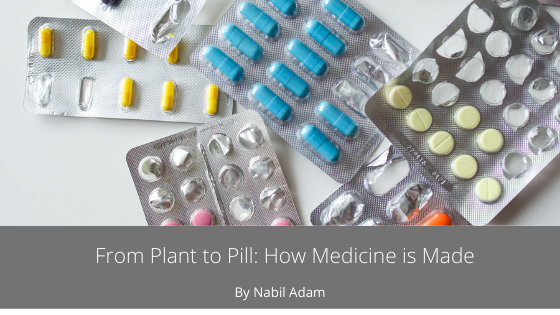Synthesizing a medicine from a plant is a complex and fascinating process. Although it may seem too intricate for most people to understand, scientists follow the same steps most of the time for determining what’s in a plant and how to make it useful to humans in combatting diseases. Here’s a quick look at the general process of turning a plant into a medicine.
Isolating Compounds
The first step is to break down the plant into its component elements through a process of filtering or distillation. This allows scientists to determine the most basic building blocks of the plant without the other structures that are not useful when creating medicine.
Identifying Compounds
Once the plant has been reduced to its most basic components, it’s necessary to determine what they are. Scientists do this by identifying what atoms make up the compound and how they are bonded together. Technical analysis devices, like computer models, are employed to help researchers learn as much as possible about the components, to determine what they are and how they might interact with other chemicals.
Testing Compound Effects
After the compounds have been isolated and identified researchers need to test their effects on living tissue. They can use cells or proteins, as well as organisms like mice or fish.
Synthesizing Compounds
If a compound is going to be used in medicine it needs to be replicable. Researchers need to find a way to reliable create the compound in a laboratory so that they aren’t relying on naturally occurring resources.
Improving the Compound
Sometimes it’s possible to modify a compound in order to make it work more effectively or remove undesirable side effects from the final product. This is accomplished by comparing the compound to similar substances and seeing if it’s beneficial to remove, add, or move groups of atoms. This can make the compound simpler or more effective.
Human Biology Experiments
Before human trials can begin, a biochemist will introduce the compound into human cells and study the effects. This can help determine what use the compound may have and predict potential side effects.
Streamlining Production
Chemists will next try to find better, more efficient ways to produce the compound to help save on production costs and reduce waste.
Clinical Trials
The clinical trial stage is where the compound is introduced to humans. The trials are conducted in stages, with groups getting progressively bigger each time. All trials must follow strict government guidelines for ensuring the safety of participants.
Turning a plant into a useable medicine is a fascinating process that requires the collaboration of many different specialists. The results can be life-altering for people all over the world and have helped to create many of our modern medicines.

